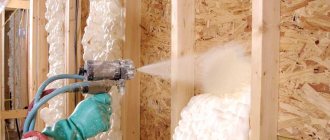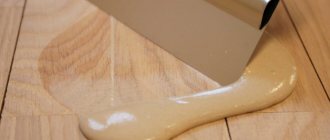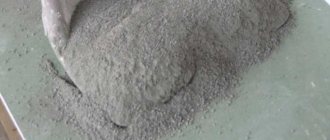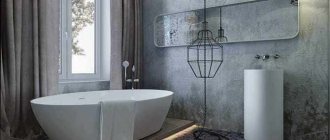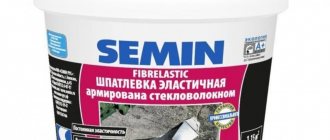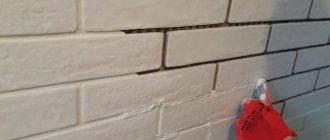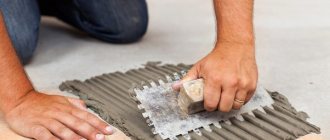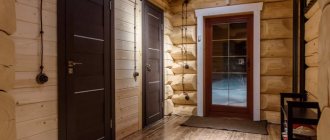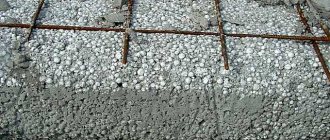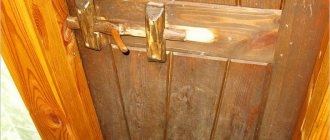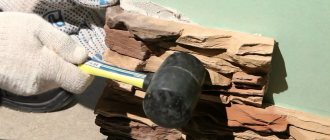Plaster is a dry mixture for finishing work that needs to be diluted with water. The solution obtained after adding water is used to level ceilings and walls, and to form slopes. There are different types of plaster, and each of them has a separate dilution and application technology. If the dry mixture is properly mixed and applied to the surface, a durable layer will be formed that will last a long time, without shedding or cracking.
Features and types
The name “gypsum plaster” is not entirely correct.
Gypsum is a mineral from the class of sulfates, which has a dual structure: fibrous - selenite, granular - alabaster. It is from alabaster that the plaster mortar, known to everyone as gypsum, is obtained. The mineral is fired, then crushed and additives are added:
- Fillers: foam glass, expanded polystyrene, perlite, vermiculite. They reduce the weight of the mixture.
- Plasticizers and modifiers to reduce the rate of hardening. This is necessary for high-quality application to the surface.
- Polymer additives to increase the viscosity and strength of the finish.
- Bleaching agents: lime, titanium or zinc white.
To obtain a working solution, it is enough to dilute the powder with water in the proportions recommended by the manufacturers.
Gypsum plaster can be applied to walls, floors and ceilings made of concrete, brick, cellular foam and aerated concrete before painting or wallpapering. Fine fraction mixtures can be used as a topcoat.
Mixtures are divided according to several parameters:
- By area of application: universal, for external and internal work.
- According to operating conditions: for dry and normal rooms, for rooms with increased humidity up to 75%.
- By place of use: universal (wall and ceiling), high-strength (for floor screeds), only for vertical surfaces.
- According to the purpose of use, gypsum plasters are divided into:
- Rough ones. Basic compositions made of coarse sand. They can be applied in a thick layer. This coating can be used under decorative plaster and for facing work.
- Finishing or finishing. Filler grain up to 0.63 mm allows you to obtain a smooth surface with a minimum layer of 2 mm.
What kind of mortar is needed for the walls?
It is necessary to select a mixture for finishing walls according to the purpose of the material. For example, a gypsum mixture is used only for interior work, a lime mixture for exterior work, and a cement mixture for leveling the surface both inside and outside.
Important
Most often, cement or gypsum mortar is used to level the walls.
You can prepare cement mortar with your own hands, using cement, sand, and water in specific proportions. But, if you choose a ready-made mixture that needs to be diluted with water, you must first read the information on diluting the mixture, which is indicated on the packaging.
Advantages
Gypsum plaster has the following advantages:
Environmental friendliness. It does not emit harmful substances and has an acidity equal to the acidity of human skin.- Vapor permeability. Helps improve the microclimate because it creates a breathable coating that absorbs excess moisture and releases it when the air is dry.
- Versatility. Suitable for covering any surfaces.
- Ease of decoration. It takes shapes with the finest modeling and is easy to paint.
- Non-shrinkability.
- Low dead weight. Porosity can be 40-60%, depending on the amount of water for preparing the solution, pore sizes up to 3 microns.
- Quick drying and strength gain.
- Easy to sand.
- Small expense. With the same layer thickness, it is 2 times less than that of cement plasters and does not delaminate; does not dehydrate; low thermal conductivity;
- High ductility and adhesion with any type of glue and paintwork materials.
Additional components
Manufacturers often add special components to their ready-made mixtures, which increase the ductility and strength of the material and add moisture-repellent properties to it. The following additional components are often used :
- Lime (lime paste). Increases plasticity and makes the material moisture-proof. The proportions of lime to cement are 1:2. The additional component cannot be larger than the main component. Lime is added only to mixed cement and sand.
- Clay . Increases plasticity and makes the material moisture-proof. Clay is added at the rate of 50-100 g per 15 liters of water. To prevent the formation of lumps in the solution, the clay is first ground in a small amount of water to form a cloudy liquid. The component is then added to the dry mixture.
- Detergent (liquid soap, washing powder, etc.). Increases plasticity and adhesion. The amount of product should not exceed 3% of the total mass.
- PVA glue . Increases ductility and increases service life. The volume of the added component should not exceed 3% of the total mass of the mixture.
Review of famous brands
The modern market of finishing materials offers consumers various types of gypsum plaster.
The most popular and proven ones:
Ascolit M35
It is a high-quality white gypsum plaster mixture for mechanical application. Made according to a special recipe. Fits perfectly on vertical and horizontal surfaces, providing increased productivity. The solution has high adhesion to mineral substrates.
Eunice Ecolayer
A universal mixture with increased plasticity. It can be applied manually or mechanically. Recommended for interior decoration of walls, preparing them for tiling, painting, wallpapering.
Prospectors
A mixture of gypsum, light filler and modifying substances. After hardening, it can be rubbed into a gloss or the surface that has not yet completely hardened can be made into various reliefs with a notched trowel.
Founds Gipswell T-25
A mixture of gypsum and modified additives for dry rooms with normal humidity. Economical and environmentally friendly plaster, does not emit harmful substances and is vapor permeable.
EK TG 40 WHITE
Universal finely dispersed mixture of white color. Provides an ideal coating for gluing even the thinnest wallpaper.
Axolit A 1
Premium blend. The composition includes mineral fillers and polymers.
Volma Plast
Light mixture with high quality chemical and mineral additives.
Rotband Knauf
Mixture with polymers. Suitable for finishing wet rooms.
Timmaxplastt 25
A quality product for work in dry, warm rooms.
Purpose of plaster
So, plaster. This dry building mixture has a direct purpose, which is to roughly level the walls. Why rude? Because fine leveling is done only later with putty. Rough leveling means that after finishing the work, the differences between individual sections of the wall should not exceed 3 mm (in some places 5 mm). This is the threshold that can later be easily eliminated with a single application of putty.
In this article I will talk about Rotband plaster (ROTBAND). This is the most popular plaster in use today, which has proven itself well:
In stores, this dry construction mixture can be found in bags of 10 and 30 kg. If you have never worked with plaster and still have to plaster a wall, then first buy a 10 or 5 kg bag and practice getting the solution. Below, in the Petrovich and OBI catalogs you will find plaster in different packaging.
Application mistakes and how to avoid them
Gypsum plaster is a reliable finishing material, but only if the technology for its application is followed. If you deviate from the recommendations of specialists, the result will be negative and the repair will have to be redone.
The use of gypsum compositions for wet rooms
A direct instruction on the inadmissibility of using gypsum in bathrooms and unheated rooms, as well as for exterior decoration. But in order to save time, many masters decide to ignore these recommendations. They motivate this decision by the fact that the plaster will be covered with finishing. This is strictly forbidden.
The cladding only protects the plaster from the outside. Plaster absorbs water, and if it accumulates too much, the plaster will begin to crack and fall off.
Expert opinion
Kukushkin Anatoly Sergeevich
Repair specialist
For wet rooms, there is a special type of gypsum compositions in which water-repellent compounds are introduced. They can be safely used in bathrooms. Therefore, when purchasing, it is important to study the recommendations on the packaging and not neglect them. It is more advisable to choose cement plaster.
Neglect of instructions
Would-be finishers, considering themselves super-professionals, improvise with the proportions of the solution, dilute the mixture with water at the wrong temperature and even dirty.
Saving specialists do not consider it necessary to waste time on plaster in 2 layers. They think that they can immediately spread it “thicker”. As a result, the plaster dries unevenly or slips.
The following also leads to a negative result:
- do not stir the solution;
- mixing in dirty containers;
- adding a new portion of the dry mixture to the already prepared one;
- mixing lime, PVA and other components.
Gypsum mixtures and the procedure for preparing solutions from them have been developed by institutes and scientific and technological centers. Trying to invent your own product is truly amateurish. Therefore, do not deviate from the instructions on the packaging.
Poor preparation of the base
Dust, dirt, oil stains, wallpaper and paint residues disrupt the adhesion of the solution to the surface. The base should not crumble or crumble, or have too high moisture absorption. If the surface is too rough, it should be primed in 2 layers. If it’s too smooth, be sure to make it matte.
Temperature violation
Plaster is not friendly with the cold. Manufacturers do not recommend working with gypsum plaster at temperatures below + 5 degrees. Under such conditions, chemical additives begin to harden, as a result the solution does not stretch and adheres poorly to the surface. Subsequently, cracks will inevitably appear on the wall. cracks.
The other extreme is temperatures above + 25 degrees. In hot weather, moisture will evaporate from the solution too quickly. This will lead to a weakening of its crystal lattice and the appearance of a web of cracks.
The necessary conditions should be created before starting work, preferably before you start choosing a suitable primer. Additionally, the room must be protected from drafts, and the plastered surfaces from direct sunlight.
Application on dry or too wet surfaces
In any of these cases, the solution does not adhere to the surface. The plaster begins to swell and gradually falls off. To prevent this from happening, the wall or ceiling under gypsum plaster should be slightly damp.
Mixture preparation technology
How to proceed to properly thin gypsum plaster? A very important detail: the lifespan of the prepared gypsum solution is on average about twenty minutes. Therefore, before preparing a batch, it is worth assessing your own working skills in order to understand how much mixture is needed in order to have time to apply it to the surface to be repaired.
Beginners are better off preparing small portions to minimize waste.
Now let's see how to properly thin gypsum plaster. The working algorithm does not cause any difficulties. It is necessary to open the package with the mixture and pour the required amount into the mixing container.
At this stage, it is recommended to use measuring containers in order to accurately maintain the ratio of components.
The manufacturer indicates the proportions for diluting gypsum plaster for walls on the packaging material. For example, instructions from the manufacturer of the Rotband mixture state that for every ten kilograms of dry plaster composition, six to seven liters of water will be required. Let’s take the smaller value as a basis and use simple mathematical calculations to determine that to mix one kilogram of the composition you will need 600 g of water.
Having learned the proportions, we move on to the practical side of the issue - how to thin gypsum plaster. Prepare your mixer by attaching the special attachment to your electric drill. After this, you should work clearly and quickly, because an extra minute of delay reduces the time allotted for applying the prepared plaster material to the wall.
How to mix the solution correctly? The mixture is stirred until its consistency resembles sour cream. As a rule, it takes about two minutes to obtain a homogeneous mass. All movements must be smooth. Then a five-minute break is taken, and mixing of the solution is repeated until it is completely ready.
There are several options for checking the mortar mixture. Remove the mixer and inspect its location in the container. If the mark does not disappear after the nozzle, this means that the solution has a normal consistency. The second control method is also easy. Place a small amount of solution on the edge of the mixing attachment and turn it over. If the mixture remains on the blade, the solution is suitable for plastering walls.
After completing the next batch, it is recommended to immediately wash the tools used in the work - the peculiarity of the gypsum mixture is its adhesion to any surfaces. You will have to act quickly, otherwise it will take a lot of time and effort to clean up the contamination.
It is recommended to use a simple technique - keep a second container filled with water near the mixing container, into which the mixer is immediately immersed.
Common Questions
Is it possible to use gypsum mixture that has expired?
Conduct a test batch of the solution and try working with it. If the plaster is plastic and adheres well to the surface, and hardens within the time indicated on the packaging, it can be used.
The workers suggested drying the gypsum plaster with a heat gun to speed up the repair. Is it possible to do this?
No. Forced drying with any heating devices will lead to cracks. At high air temperatures, moisture leaves the top layer and remains inside. Therefore, swelling of the plaster occurs. Plus, fungus begins to form inside.
Is it possible to mix leftover plaster from bags from different manufacturers?
If the composition and proportions of the components are absolutely identical, it is possible. The main thing is not to mix mixtures of different compositions and purposes.
Is it possible to use gypsum plaster on a glazed loggia?
This is only possible if the loggia is insulated and dry. If the temperature in winter drops below + 5 degrees, in the spring, when the weather gets warmer, the plaster will begin to peel off.
If work was done on gypsum plaster in the summer and it dried out, the house would not be heated during the winter. Is there a chance that it will move away from the walls in the spring?
If the work was carried out in the summer, and the plaster has dried, and in rooms that have overwintered without heating, there are no drafts or water leaks from the roof, then the likelihood that it will move away from the wall in the spring is minimal. The adhesion of gypsum plaster is high, and it is difficult to detach it from the base after setting.
Is it necessary to putty the wall after gypsum plaster before painting?
If glossing has not been carried out, it is definitely necessary.
The gypsum solution hardens too quickly, what should I do?
You can mix a small volume of solution with the addition of retarders for testing. If retarders do not help, make smaller batches in order to have time to work them out.
Expert advice
Adviсe:
- Before mixing the solution, it is necessary to prepare the surface. It is recommended to thoroughly wash the walls with water, dry them, then treat the surface with deep penetration primer to prevent the appearance of fungus and mold and increase the level of adhesion.
- The quality of work with dry mixtures is also affected by weather conditions. It is not recommended to plaster in hot weather, during bright sunshine (the plaster dries too quickly), or during rain (due to humidity, the plaster dries too slowly). Wind is also bad, as it can raise dust.
- For different layers (there can be 1, 2 or more) a solution of different consistency is needed. For example, for casting you need a thicker mass, so less water is added here. The base layer will be a little thinner. And the finishing coat is applied in a very thin layer, so it should be liquid, but not spread over the base.
The quality of the solution and the outcome of the finishing work depend on how correctly the composition for plastering walls is mixed. An incorrectly mixed solution will cause the dried layer to quickly become cracked or crumble. To prepare plaster with your own hands, craftsmen advise using universal calculations, but to prepare a ready-made store-bought mixture, it is best to follow the manufacturer’s instructions.
Current recommendations
To ensure that the plaster solution turns out to be of high quality and there are no problems with its use, it is recommended to adhere to the following current tips:
— you cannot add water or powder concentrate to the prepared mixture during plastering work;
— leaving the solution “for later” is prohibited. It will quickly harden or begin to clump - both processes make the mass unsuitable for further use;
— it is necessary to follow safety precautions and precautions when using electrical appliances (mixer, hair dryer, drill) when working with plaster;
— you need to wear protective equipment: gloves, thick clothing, goggles, a respirator, appropriate shoes.
Good luck with your work and ideal results on plastered surfaces!
